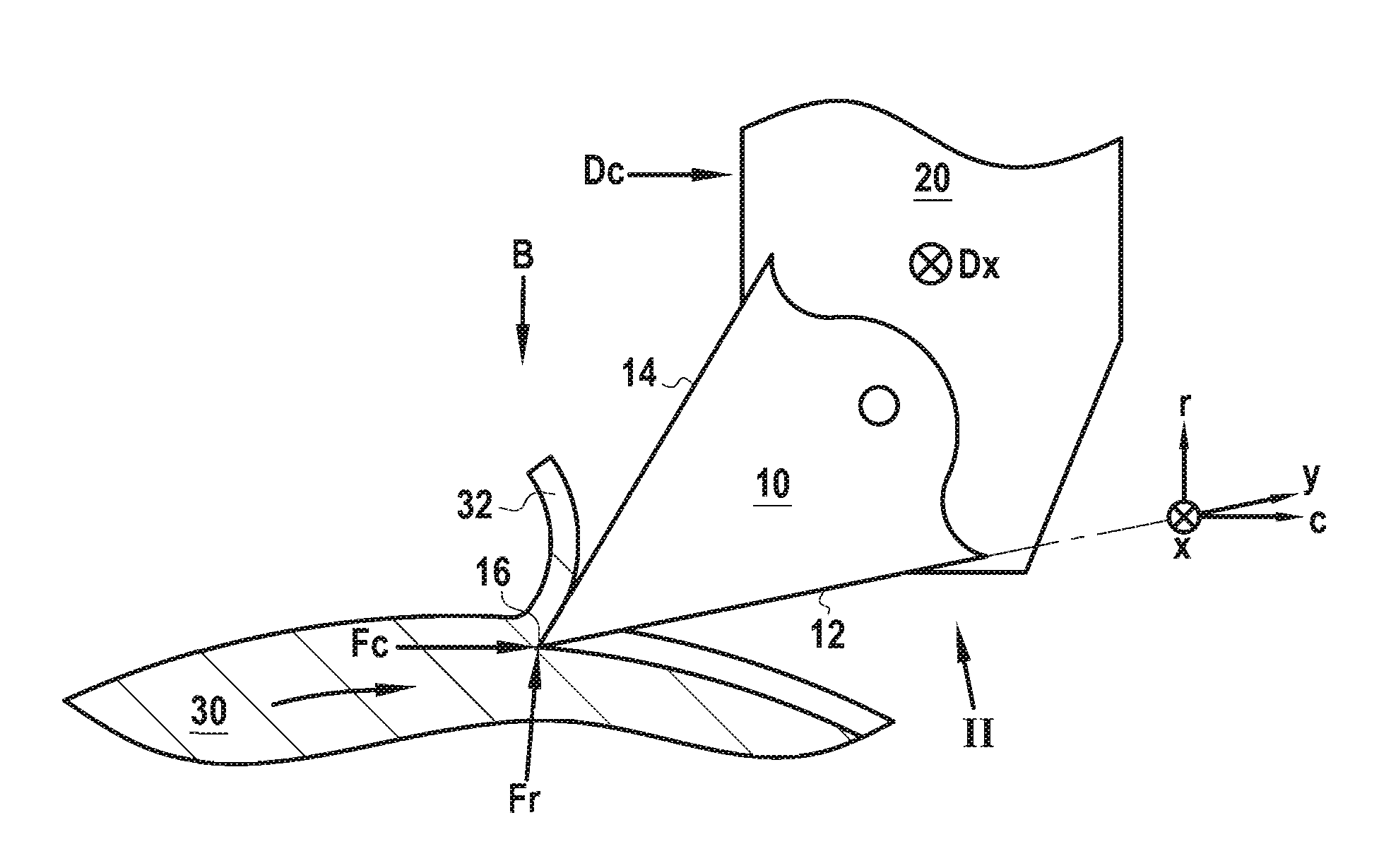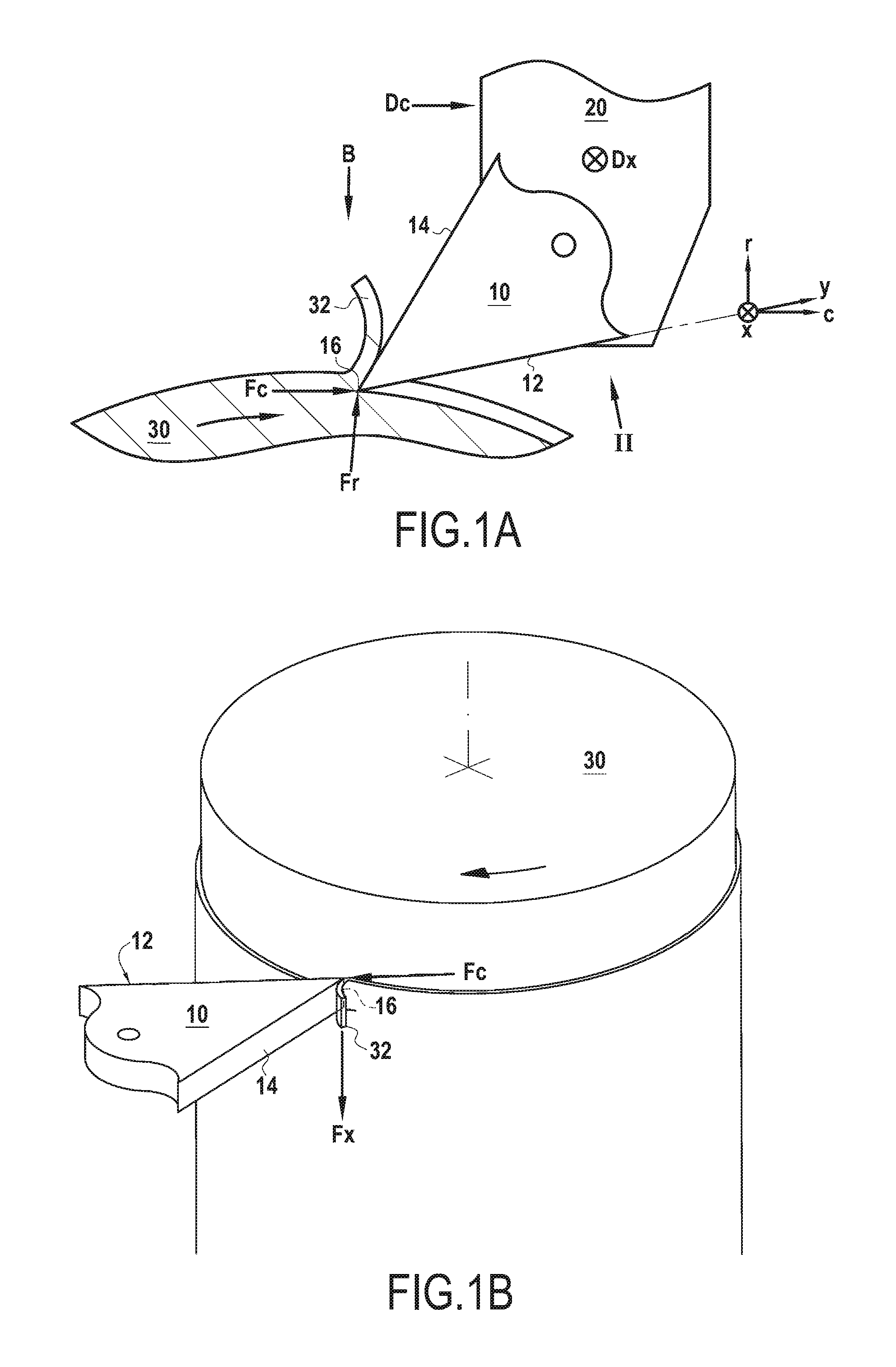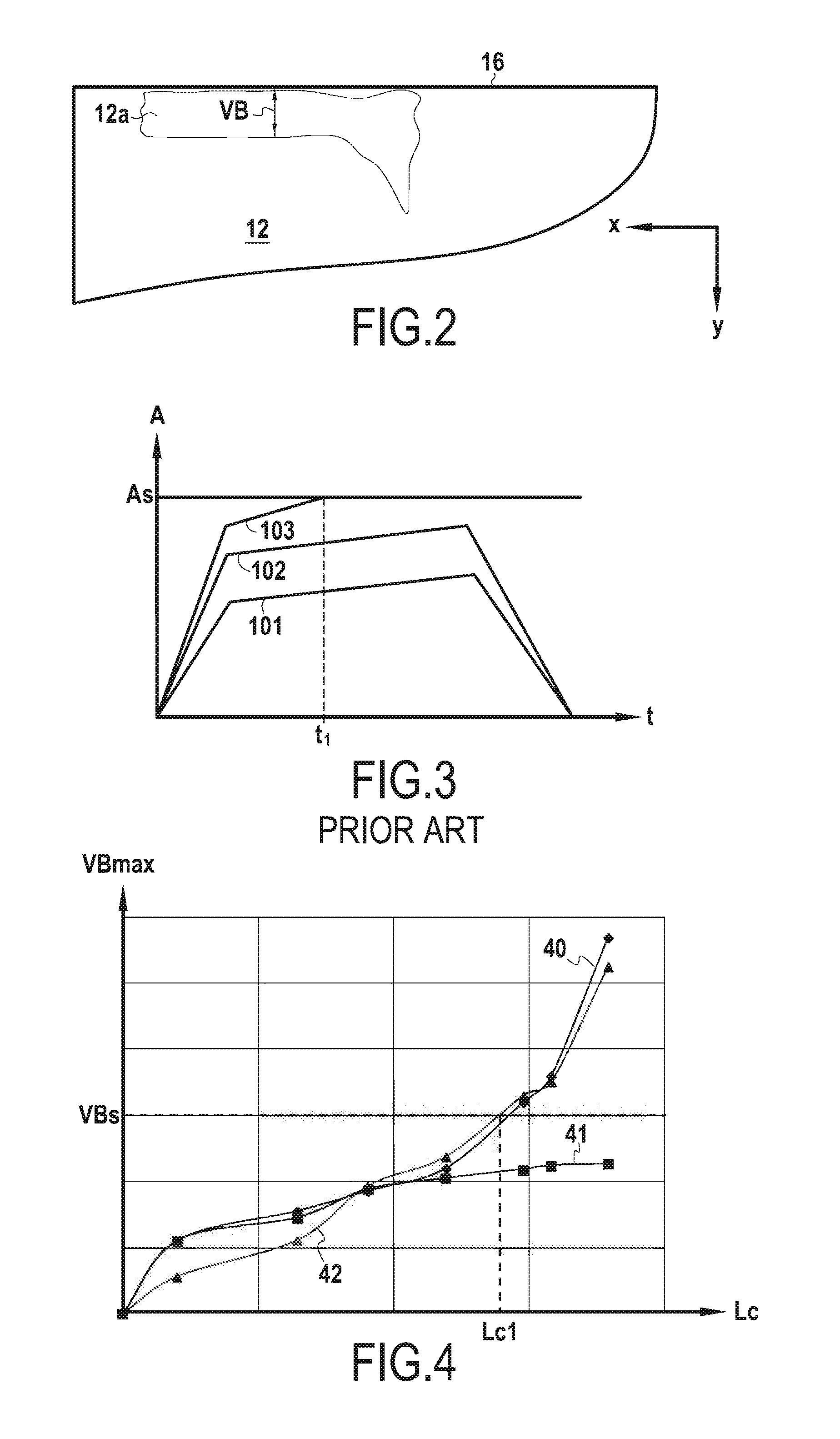Method and device for determining the wear of a cutting tool flank
- Summary
- Abstract
- Description
- Claims
- Application Information
AI Technical Summary
Benefits of technology
Problems solved by technology
Method used
Image
Examples
Embodiment Construction
[0080]In the implementation that is described below, the determination method of the invention is applied to a cutter tool of the above-described type for use in turning TA6V (the Ti Al 6 V alloy as named in the AFNOR French standard; AMS 4928 in the ASTM American standard). The wear of the flank of the cutter tool in this example is to be characterized by the maximum flank wear VBmax. Nevertheless, the present invention does not apply only to turning, nor does it apply only to TA6V, and it is possible to select a characteristic length other than the maximum flank wear VBmax.
[0081]FIG. 4 shows a curve 40 representative of the variation in maximum flank wear VBmax as a function of the observed length of cut Lc, i.e. the length of cut observed while machining and depending on time. The length of cut Lc is associated with the cutting time t by means of a formula that depends on the type of machining. By way of example, when turning, the following relationship applies:
Lc=DcπLufz
where Lu...
PUM
 Login to View More
Login to View More Abstract
Description
Claims
Application Information
 Login to View More
Login to View More - R&D
- Intellectual Property
- Life Sciences
- Materials
- Tech Scout
- Unparalleled Data Quality
- Higher Quality Content
- 60% Fewer Hallucinations
Browse by: Latest US Patents, China's latest patents, Technical Efficacy Thesaurus, Application Domain, Technology Topic, Popular Technical Reports.
© 2025 PatSnap. All rights reserved.Legal|Privacy policy|Modern Slavery Act Transparency Statement|Sitemap|About US| Contact US: help@patsnap.com



